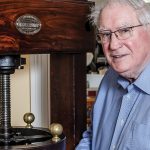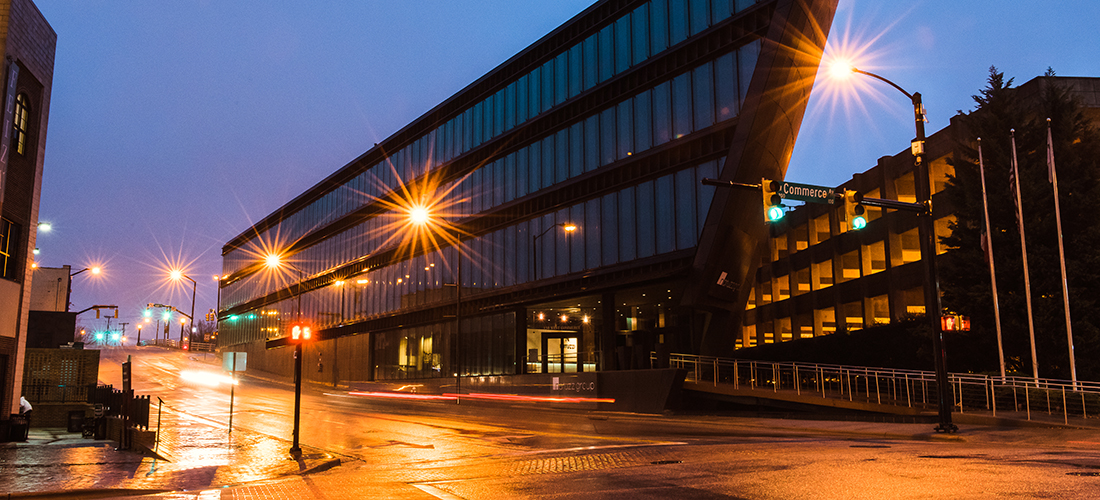
High Point’s wildcat of an economy keeps purring, but the city struggles to up its curb appeal
By Billy Ingram • Photographs By Amy Freeman
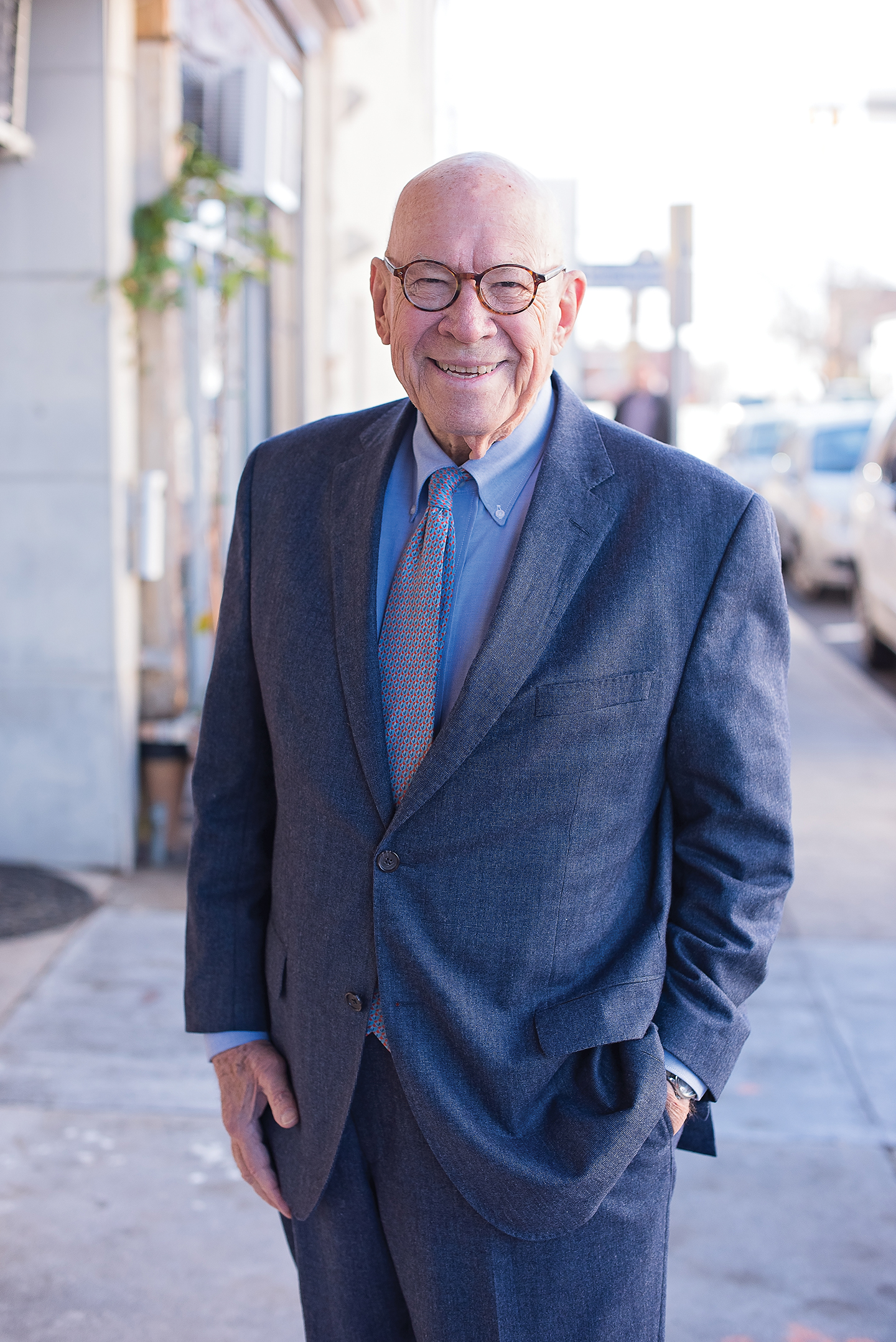
“High Point is as complicated as the Bible,” proclaims my tour guide.
As we’re standing in front of 114 South Main street a scruffy 20-something kid on a bike stops in his tracks, pulls out his ear buds and turns to ask 80-something Charles Simmons if he’s still interested in purchasing one of his paintings. Known by many as the unofficial mayor of Main Street, Simmons describes himself as “low profile.” But practically everyone we’ve run across while he’s been leading me on a walking tour of High Point Landmarks over the previous four hours has stopped to greet him warmly, whether the delightful dowagers of the exclusive String & Splinter Club or the designers and planners populating Market Square.
Simmons enjoys less than six degrees of separation from any important person, place or thing associated with the Triad. He’s a globetrotting evangelist, you might say, whose faith in the future of High Point and its all-important spring and fall furniture market is unshakeable. His roots run deep. Simmons’ family acquired 35,000 square feet of land downtown beginning in the 1860s, including 114 South Main, a majestic, three-story brick-and-marble structure crowned with massive, impressively detailed cathedral windows. “My grandfather built this building in 1912 and it is still 95 percent original, because my granddaddy knew how to build buildings,” he says, with pride. When Jimmy Noble suggested opening a New Orleans style French restaurant here in the early 1980s, Simmons and his sister said they’d work with him. J. Basul Noble Restaurant became one of the area’s premier dining destinations. With low ceilings, exposed brick and an underground jazz cellar, Noble’s new eatery grew from sixty-five seats to one-hundred-fifty seats. “One night there was somewhere between three and five billion dollars sitting in that restaurant having dinner,” Simmons recalls. Two doors down, Gerald Washington of Mississippi opened an eatery with, “nine ugly sofas, nine ugly love seats, nine funky chairs, and in five years went from $8 million volume to $50 million.”
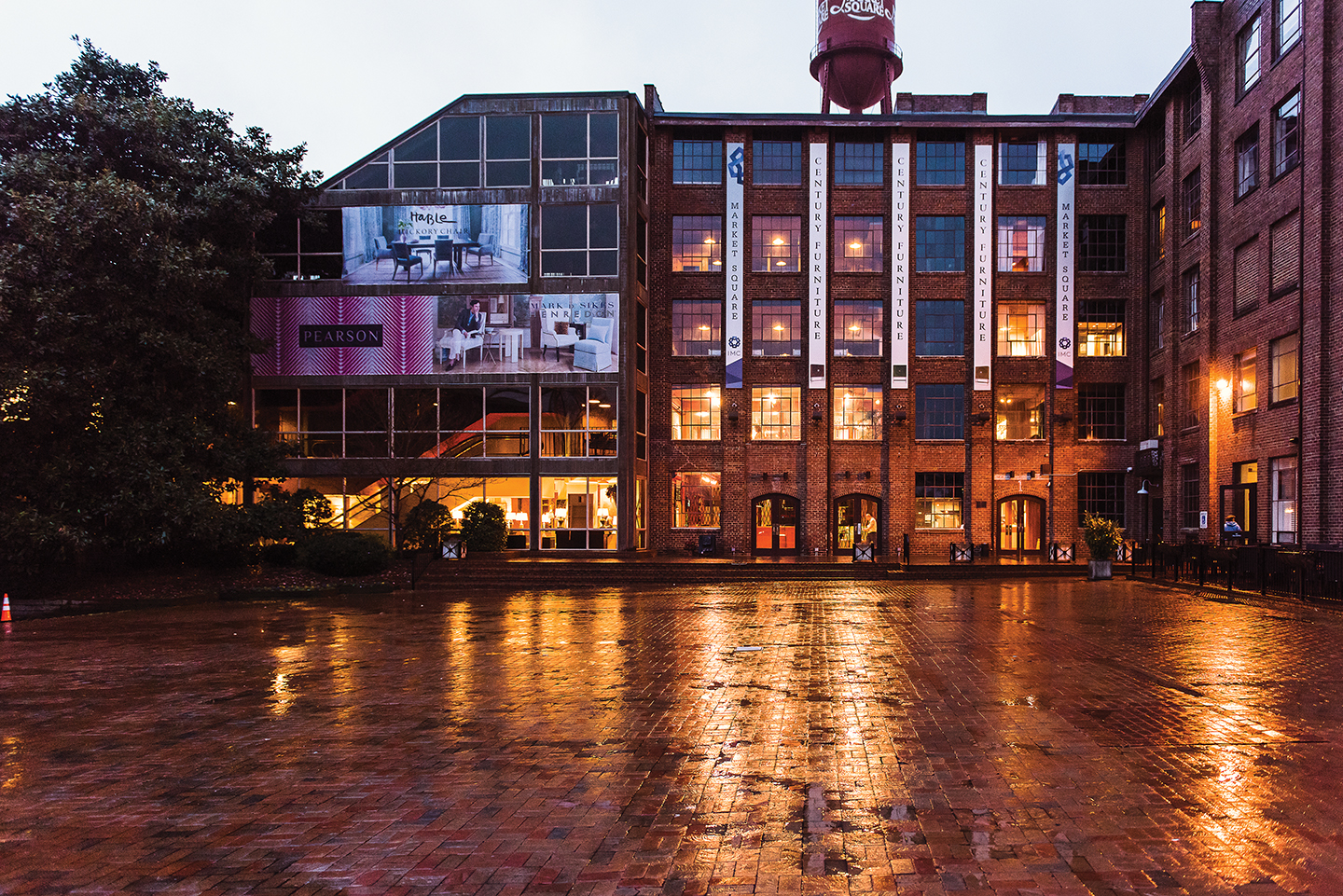
In 2009, after a remarkable twenty-five year run, the restaurant closed. “Jimmy moved out and we got more money out of it as a showroom than we did on a percentage lease on a highly successful restaurant.”
For Simmons, history lives on every corner of the city he believes is finally on the rise: in the nondescript factory standing on Broad and Elm where George T. Wood & Sons began their multigenerational heritage and the towering International Home Furnishings Center. “This was the first market building right here, 250,000 square feet of space.” Simmons swears that the Jamestown, New York, market is an exact replica of High Point’s iconic building. “Captain Charles Long went up there and either stole the plans or bought the plans from the architect,” he insists. “Everything was exactly the same.”
What makes Simmons an expert on the High Point Market? “I’ve been to 132 furniture markets, I never buy I just look,” he says. “The reality is, the High Point Market was and may still be the No. 1, money-making event in the United States ahead of the [Consumer] Electronics Show in Las Vegas, the Kentucky Derby, the Masters, the Super Bowl, the Final Four, the World Series, and Mardi Gras.”
Andrew Brod, a UNCG economist, did a study on the market, he says. In 2004 the economic impact was $1.2 billion dollars a year. Mardi Gras was $900 million and the Super Bowl tapped out at $300 million. “Nobody talks about it,” Simmons continues. “In fact, we’ve got more tenants per capita than anywhere in the world. We’ve got our regular tenants, which is why the prices are so high, but we’ve got another 5,000 tenants that come here for the furniture market and, when they leave, they lock the doors behind them and they’re gone”
I must confess a personal affinity for High Point. It was an integral part of my childhood in the form of WGHP, home of wise-cracking weatherman Frank Deal, legendary sportscaster Charlie Harville, Dialing For Dollars twice daily with Jo Nelson (“Do you know the count and the amount?”), Shock Theatre starring Dr. Paul Bearer. And who can forget Miss Libba’s Romper Room or Limbo the Clown? As soon as I got my driver’s license, I made weekly treks to Parker’s News Stand on Main Street. For some reason, a good number of periodicals would be on sale there weeks before they appeared in my hometown of Greensboro; it was the only bookseller in the county that carried Variety and Hollywood Reporter. In 1987, I was a performer in the first production shot at the then brand-new motion picture studio just off of Business-85. When I returned to live in the area in the mid-’90s, after fifteen years away, I found myself happily designing furniture catalogs at Omega Studios, run by the nicest and sharpest businessman I ever met, one of High Point’s leading lights, Sidney Gayle.
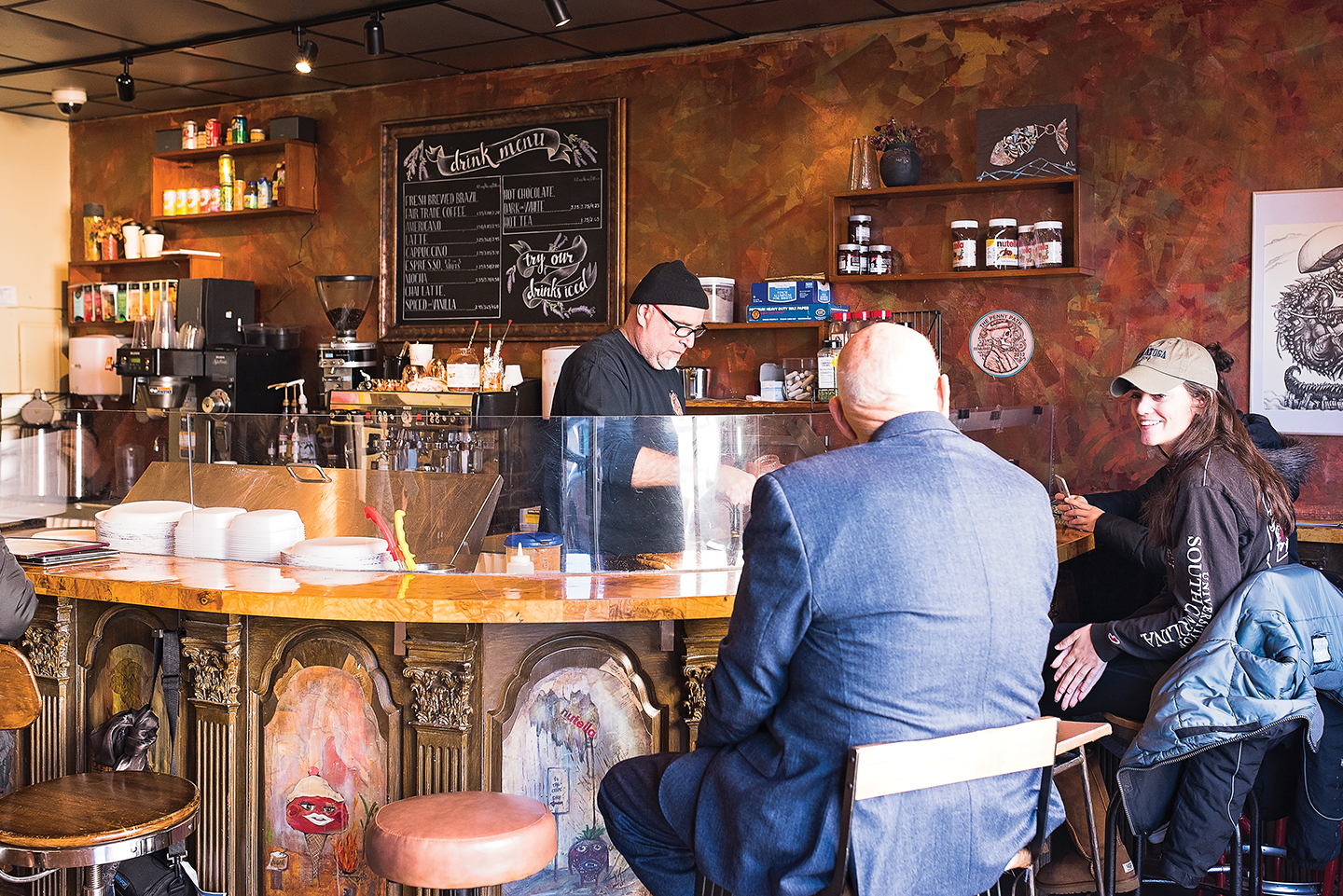
High Point is a great place to visit but not everyone is altogether enthusiastic about living there. A shame, really. In terms of savor and flavor, panache and gentility, infrastructure and magnificent 1920s Art-Deco architecture, the city possesses an undeniable allure.
With comfy PART Express coaches rolling into the gilded 1906 Depot every half hour from Greensboro and Winston (less than five dollars round trip, half that with a senior discount), there’s no excuse not to partake in a busman’s holiday strolling the dozens of showrooms compacted into the downtown area, which, unlike the larger cavernous spaces, such as the Natuzzi building, looking like an ocean liner ready to set sail, and Showplace, are actually open to the public.
Antiques & Interiors is one of the biggest sellers of antiquities in the country; The Blair Oak at 106 Oak Street specializes in cottage interiors and accessories, located in downtown’s oldest building, originally a private school for boys in 1879; Ashley Interiors’ indulgent beach house and exterior porch furniture boasts the largest display of wicker/rattan furniture in North Carolina; Zaki Oriental Rugs will dazzle you with its hypnotic hand-knotted designs; Asian Loft showcases exotic Chinese and Japanese imports that can accommodate any budget. Another must-see historic treasure, Market Square at 305 West High, is a sprawling designers enclave housed in the meticulously restored 500,000 square foot former Tomlinson Chair Manufacturing complex.
Jason Oliver Nixon and John Loecke’s conversion of a charming midcentury drug store (McLarty’s) into a Madcap Cottage of kitsch and decorative high fashion has commanded the attention of the world. Francesco Molon Italian Luxury Furniture is a stunning palatial setting with an elegant array of modern and baroque furnishings created for movie stars and kings. You half expect Nora Desmond in Sunset Boulevard to make a grand entrance, announcing that she’s ready for her close-up.
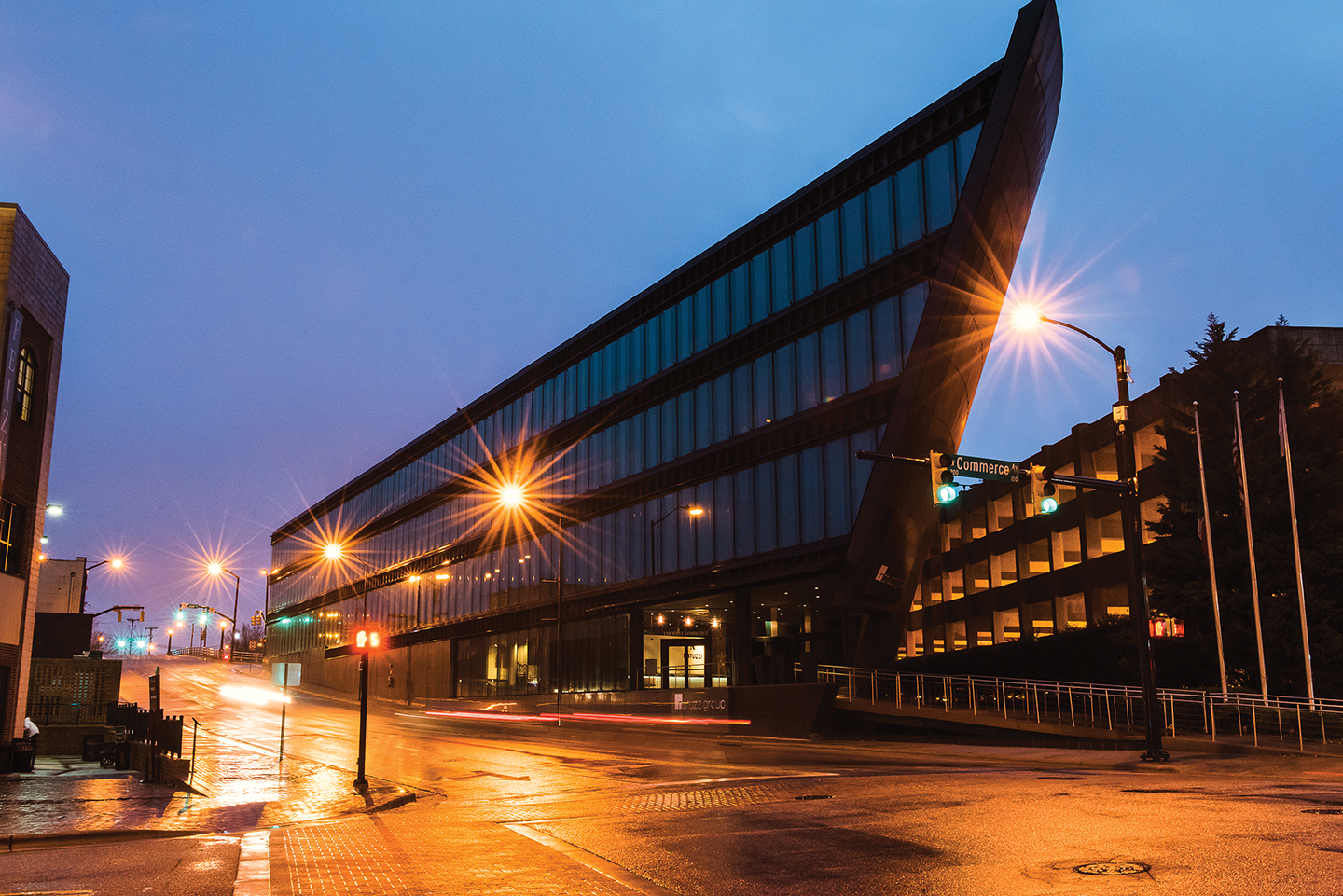
For all the grandiose and fanciful, High Point retains a distinct down-home vibe, especially among some of the centrally located eateries. May I recommend a few favorites? The spaghetti is great at Jimmy’s Pizza, where the atmosphere and zest of otherwise long-gone pizzerias from the 1970s lives on. Open only three hours daily, The Dog House is another 5-Star luncheonette (We’re talking Facebook rankings here) that serves burgers, hot dogs and fried bologna sandwiches — cafeteria-style, and cash only, please. Whether you go for just a dog and buns or all the way, it’ll taste better if you eat it at the worn leatherette stools at the lunch counter. Funky fresh Mi Taqueria on the corner of West Green Drive and Taylor Avenue plates the finest authentic Mexican food I’ve had anywhere. It’s Becky & Mary’s Restaurant on Washington Street that you really need to discover, not far from where favorite son John Coltrane attended high school. (Trane’s sheet music, complete with notes in the margins and his piano are on view — alongside American Idol songbird Fantasia Burrino’s choir robe — at the delightfully eclectic and inventive High Point Museum on East Lexington, by the way). With no signage out front, Becky & Mary’s is easy to miss but is alone worth a trip to High Point for bona fide — and fried, especially the chicken — Southern soul food.
Outside of downtown — or what High Pointers call Uptowne — young folks are flocking to Brown Truck Brewery for craft beer sourced from mainly local and seasonal ingredients. Some are rising professionals, others, students at nearby HPU, whose Cinderella story of sleepy little High Point College transformed into a self-contained metropolis in less than a decade has almost single-handedly kept local newspapers in business. On the southern end of Main Street sits Sir Pizza where for fifty years the Butler family has been serving the best pizza in the state, one square cut pie at a time. Those who remember Friendly Shopping Center in the ’60s and ’70s may recall the Sweet Shoppe Bakery located behind Fleet-Plummer Hardware. Our sense of smell, scientists tell us, retains its memory the longest and you’ll know that’s true when you step through the door of their High Point store at 2008 North Centennial Avenue. This family-owned bakery uses the same recipes they did half a century ago so your olfactory senses and taste buds will revel in sensory overload that spans generations.
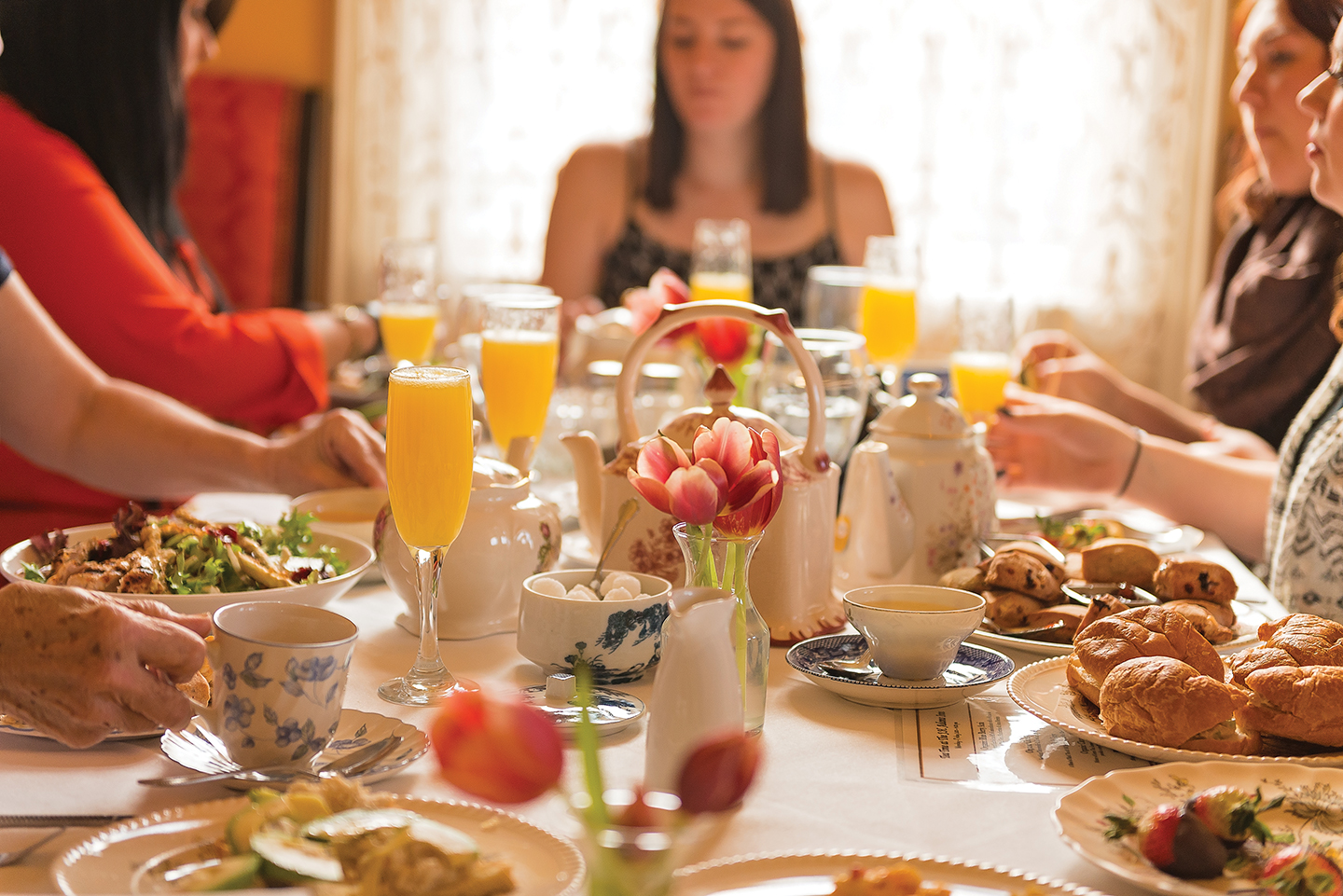
Seeing as we’ve barely scratched the surface of the marvelous sights to see, why isn’t High Point experiencing a cultural renaissance in a manner similar to what is happening at the Railyard on East Lewis Street in Greensboro or the eastern edges of the Arts District around Sixth and Trade in Winston? As executive director of the Southwest Renewal Foundation, Dorothy Darr is supremely invested in making that happen: “If I were to make one critical remark about High Point, it is we don’t market ourselves well enough and we don’t emphasize our small town quality of life.” She cites the light traffic (compared to Charlotte, anyway), green spaces and a hoped-for urban greenway to inspire pedestrians and cyclists as potential selling points. Darr says the city needs to have a multimodal core city area to improve the look of its streetscapes. “We have no major highways going through the downtown area like I-40 in Winston-Salem and Wendover in Greensboro,” she says. With existing cool, old buildings, it’s a hipster-magnet ripe for attracting the creative class. Darr envisions a business incubator and an exploding design district.
But, as fate seems to dictate, High Point’s high hopes are punctuated with urban challenges. Losing the North Carolina Shakespeare Festival after thirty-seven years was a cultural sucker punch, but around that same time the city gained an impressive Centennial Station Arts Center housed in the former 1930s’ era Norfolk Southern freight depot with a stage and hardwood ballroom dance floor where open mic nights last summer drew hundreds of performers and devotees. Still, for the most part, you can’t locate a crowd downtown at night with a Geiger counter. No need to roll up the sidewalks, they’re never fully extended when every other storefront is an unwrapped birthday present for fifty weeks out of the year.
What gives?
High Point has always been an entrepreneurial town, but it’s become a victim of its own success, where rents run as much as three times higher than similar spaces in downtown Greensboro That’s because a furniture showroom can take 2,000 square feet and do $50 million dollars in volume out of it. Around half a billion dollars a year is spent behind locked doors on exhibits for market. But it takes pioneers willing to be that lonely outpost serving customers on a block of papered-over windows. Trouble is, as the adage goes, “Pioneers get eaten by the bears.”
Miro Buzov is one of those brave souls. In 2013 he opened The Penny Path Café & Crêpe Shop (Look to the floor for the reason it is so named.) in the heart of town on East MLK near Main. As to why he’s been successful, Buzov explains, “Outside of Brown Truck, it’s one of the only places in all of High Point that consistently draws business from Greensboro, Winston, Advance, Kernersville . . . people come from everywhere. People make a deliberate decision to go out of their way to do what people here do on a daily basis.”
The Penny Path Café reminds one of a European brasserie. For Buzov, the century-old storefronts that are in abundance downtown are naturals for creating an intimate environ. “I wanted to do something fun and at the same time show it could be done. On a holiday weekend people from out of town, people who live Seattle, New York or Chicago, they always come here. From a monetary aspect, it’s incredibly difficult to make this work.”
Just two years ago, Buzov says there were fourteen storefronts in the two blocks around his business that hadn’t been affected by the market — empty buildings. “Nobody was buying them, they were dirt cheap, maybe a little more expensive than what they should be because of where they are, but still within the range for somebody to develop, because this is really the only street in High Point where immediateaction could have been taken and nobody did so,” he says. “I like living here—don’t get me wrong—but every time I see something cool coming up in Winston and Greensboro, I feel like a slap in the face all over again.”
Things might have turned out differently in Charles Simmons’ view. He mentions two events in High Point’s past that could have been major tipping points in providing a more diverse economy less reliant on furniture manufacturing jobs that largely evaporated after NAFTA. “In the late ’30s, Bill Blair, who was a stock car driver, his family owned a 900-acre farm and he built a one-mile, red dirt racetrack,” Simmons recalls. “It was the first time my daddy said he had ever seen a tunnel that went under the track to get to the infield, made from gigantic 12 x 12 timbers. There was no steel, just lumber from off the farm. Mrs. Blair was actually on NASCAR’s board in the ’40s, because she had this racetrack; Bill France [founder and later CEO of NASCAR] had her on the board.” But as always, fate had other ideas. “Right after World War II, the Jaycees had a motorcycle race out there and they had a wreck, some little boy ran out on the track and got killed. The Jaycees had no insurance, [Mrs. Blair] had no insurance but she had $75,000 in the bank to pave the track. So she couldn’t pave it. If she had, NASCAR might have been here instead of Charlotte.”
More egregious in the vagaries of High Point’s fortunes was what Simmons deems a “major, major error.” His take: “In 1927, the wealthy money in Winston, the Reynolds Tobacco people, could not get along with the nouveau riche money in Greensboro. They discussed having one airport on the Forsyth and Guilford County line but they couldn’t get along. R. J. Reynolds’ 17-year-old son was a pilot. He built Smith Reynolds Airport in Winston-Salem in 1927 so they built the Greensboro-High Point airport out there on Lindley Farm’s nursery.” As late as the 1950s, the combined counties could have easily constructed the longest runway in the world on undeveloped parcels that sold for just $1,000 an acre. “Can you imagine, on all that flat land out there, how many warehouses with access to railroad tracks they could have had?” Simmons wonders. “But they didn’t do it. If they had, I honestly believe that Greensboro, High Point and Winston would be bigger than Charlotte.”
While High Point coulda been a contenduh, there’s no reason preventing it from still becoming one. Just look at the well of talent and reserves on hand to launch the next Ralph Lauren or Martha Stewart; someone with vision could easily tap into the amazing resources at one’s fingertips here with the largest inventory of furniture and fabrics to be found anywhere in the world. As Simmons put it, “There’s more milk in the cow.”
And he maintains it wouldn’t take much for High Point to become the land of milk and honey. “We’re one of only four places in the country with access to four Interstates. Atlanta doesn’t have it, New York City doesn’t have it, Washington, D.C., doesn’t have it,” he says. The trick is to get creative young people to want to live in High Point, because, as Simmons points out, “We’ve got more Parsons, Pratt, RISD, SCAD graduates per capita than anywhere else in the world.”
One forward-thinking individual who recognizes the city’s vast potential is Ridvan Tatargil, owner of Chicago-based Eastern Accents. He’s putting the finishing touches on the restoration and expansion of Pandora’s Manor, a magnificent 6,000-square-foot home on West High Avenue that will serve as a bed and breakfast, and meeting place for social gatherings. Pandora’s Manor was built 111 years ago by furniture manufacturer Henry Fraser for his wife Pandora, who is depicted with their child in a lovely stained glass window. Tatargil also purchased the parking lot behind the house along with what used to be a NAPA Auto Parts store and a small bar, so the entire block can be transformed into a high-class luxury event space for the designer market. Spokesperson Connie Lineberry is excited by the prospects, “The plan is, on the corner of Oak and Green, to build a craft brewery and restaurant.” But, she says, it won’t be just another craft brewery: Tatargil, who is “sinking millions into High Point,” brings, not only capital but vision to the city, as well. “He truly is one of the most visionary and innovative people,” she says.
So the economy in High Point is percolating. Charles Simmons points to fifteen buildings that have been sold in the last fifteen months, one going for $6 million, all fetching a great deal more than similar units in neighboring cities would. But as we wandered around the centrally located Depot, we encounter almost no one. “Nothing but ghosts here,” he says. “Ghosts don’t buy much coffee, they don’t go to restaurants. On the other hand, twice a year, the most stylish women you ever saw are here. You’d think you were on the corner of Hollywood and Vine.”
We end our tour on Commerce Street, across from the Commerce & Design Building, where these words paraphrased from a sermon by John Winthrop are enshrined: “A city upon a hill with the eyes of all the world upon it.” It’s high time we all gave High Point another look. OH
Billy Ingram plans to spend a lot more time in High Point this year, beginning with the buffet at Pizza Inn, whose departed GSO locations he has been mourning for years. His moveable feast, however, is dependent on your buying his book about Greensboro — Hamburger²2.

